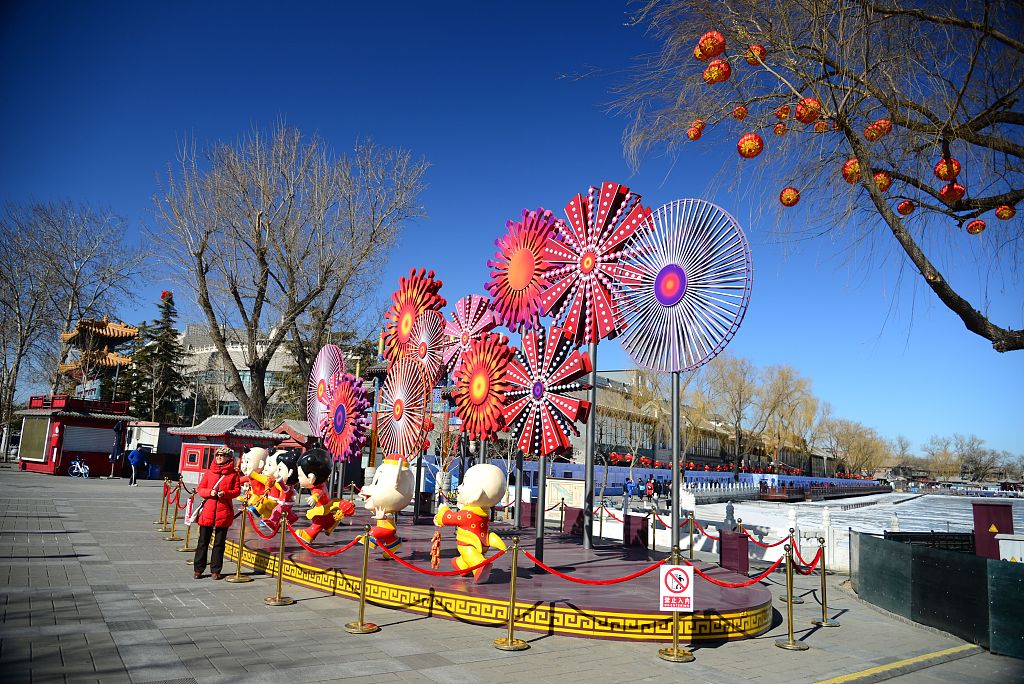
The photo taken on Feb. 16, 2019 shows a corner of Shichahai, Beijing. (Photo: VCG)
After adopting various measures to combat air pollution, Beijing reduced its annual average density of PM2.5 particles by 42.7 percent from 89.5 micrograms per cubic meter in 2013 to 51 micrograms per cubic meter in 2018.
The measures include removing or renovating coal-fired boilers, taking environmentally hazardous cars off roads, promoting clean energy vehicles, closing down polluting companies, and popularizing coal-free heating in its plain areas.
Such measures the city took in the past five years to clean up its air surpassed the sum of the previous 10 years, according to Yu Jianhua, deputy head of the Beijing Municipal Ecological Environment Bureau.
People in the Chinese capital became more aware of its heavy air pollution in January 2013 and witnessed 58 days marked with heavy air pollution that year. The city also began to monitor the density of PM2.5 particles that year by setting up 35 monitoring stations across the city, while implementing a new air quality standard.
In September 2013, Beijing released its 2013-2017 clean air action plan, setting out to cut its annual average density of PM2.5 by 25 percent by 2017.
The plan entailed 84 tasks in six aspects including coal burning, motor vehicles, and industrial dust. The total number of automobiles and the joint prevention and control of Beijing-Tianjin-Hebei region became subjected to air pollution measures for the first time, and the concentration of PM2.5 also became a measurement of the government's work performance for the first time.
On Jan. 1, 2015, a newly revised environmental protection law, said to be the strictest in the city's history, went into effect. With the legal measures in place, the annual average concentration of PM2.5 in Beijing in 2015 decreased to 80.6 micrograms per cubic meter, down 6.2 percent year on year, and dropped to a new low of 73 micrograms per cubic meter in 2016, and 51 micrograms per cubic meter in 2018.
Li Xiang has been working in the Beijing Municipal Ecological Environment Bureau for nearly 16 years. Responding to doubts that favorable meteorological conditions brought along the continuous improvements, she said, "In the short term, meteorological fluctuations may play a dominant role, but in the long run, it is impossible for the air quality to improve if there were no measures to reduce emissions and cut the total amount of air pollution."
In 2017, Beijing released its new urban master plan, which specifies that the city aims to reduce its annual average concentration of PM2.5 to 56 micrograms per cubic meter by 2020, and improve its air quality fundamentally by 2035.
Li said heavy pollution may still recur in autumn and winter, but the pollution may be less heavy and last for a shorter duration. With much progress already made, Li said the city's environmental authority is determined and confident in the city's air quality improvement.


